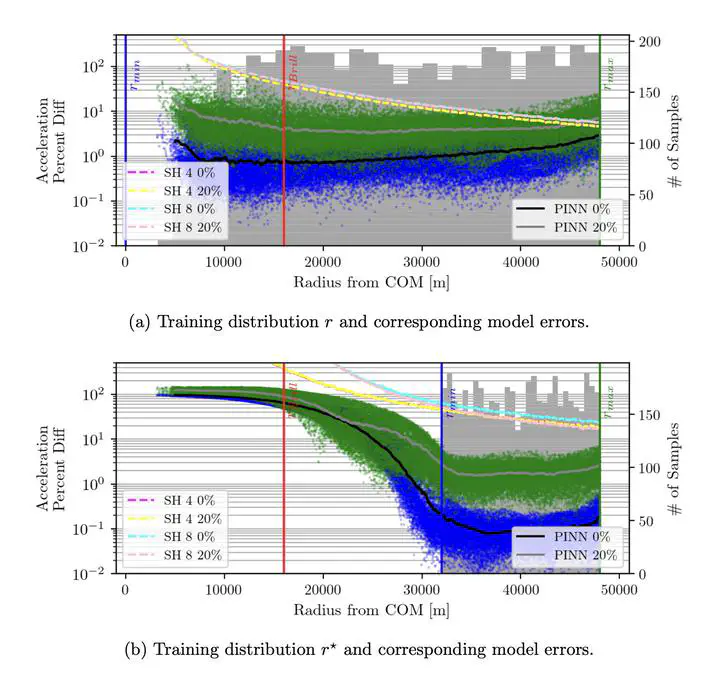
Abstract
The physics-informed neural network (PINN) gravity model offers a novel and efficient way to represent high-fidelity gravity fields. PINNs leverage modern deep learning strategies to generate custom basis functions capable of modeling idiosyncratic features of a celestial body’s gravity field, bypassing the inefficiencies encumbered by gravity models which prescribe geometries like spherical harmonics. Prior research on the PINN gravity model focuses on its ability to represent the gravity fields of large, near-spherical celestial bodies with highly discontinuous surface features. This research extends the investigation of the PINN gravity model to the small-body regime. Specifically, the results demonstrate that the PINN gravity model is capable of solving the additional challenges associated with modeling small-body gravity fields such as divergence within the Brillouin sphere, cumbersome computational requirements, and sample-inefficient regression. Further, this paper investigates strategies to improve network gravity modeling performance—demonstrating how additional physics constraints in network cost function can increase robustness to noise in the training data and how introducing transformer-inspired changes to the network architecture can offer order-of-magnitude improvements in modeling accuracy.